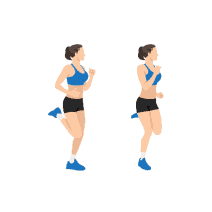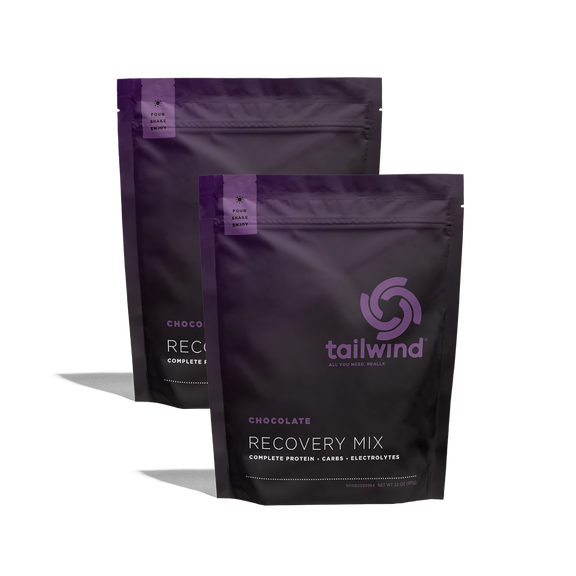Running goes beyond lacing up your sneakers and hitting the pavement. It’s more than just the miles, it’s also how you take care of your body. So if you want your running experience to be smoother, free from injuries, and fun, you’re in the right spot.
Today, we’re about to explore the frequently overlooked but incredibly important parts of your running routine: the pre-run warm-up and post-run cool-down.
These simple routines can transform a lackluster workout into a high-performance run, tapping your full running potential and helping you become a better, healthier, and happier runner.
Let’s get started.

Whether you’re a runner looking for running tips or a cyclist searching for cycling advice, this site is here to help you elevate your fitness game.
THE KEY TO BETTER RUNS: THE WARM-UP ROUTINE
What’s a warm-up routine, and why should you do it?
Prepping for your run—whether that’s a short, quick one around the block, a treadmill run, or a race—is all about setting the stage.
Before you hit the pavement, it’s essential to dedicate a few moments to do warm-up ritual.
Here’s why it’s a must:
- Boosts your blood flow 1: During a warm-up, your muscles get a rush of blood, bringing in a flow of oxygen and nutrients, all ready to power your performance.
- Elevates body heat 2: A warm-up turns the heat up on your muscles’ stove. Warming up cranks your core body temperature a notch, making your muscles more flexible, responsive, and ready to go.
- Primes the mind: But there’s more to it than just the physical. A good warm-up is your backstage pass to get mentally in the zone. It’s your moment to set intentions, focus, and prepare your mind for the workout or race.
Boost your run: Essential warm-up strategies for runners
Now that we’ve talked about the perks of doing a pre-run warmup, let’s dig into the details on how to warm up for a run.
Here’s what to do before running:
Start with light movement: Begin your warm-up with 5-10 minutes of light aerobic activity. Whether that’s a stroll or a gentle jog, this step gradually increases your heart rate and body temperature.
Do a few dynamic stretches before running: Once your heart rate is up, let’s switch to dynamic stretching exercises.
Dynamic stretching is a solid choice for your warm-up routine, as it gets your blood flowing, enhances flexibility, and activates crucial running muscles.
Here are some dynamic stretches to include:

LEG SWINGS
Stand near a support, such as a wall or tree and swing one leg forward and backward. Repeat for about 10-15 swings per leg.

HIGH KNEES
While jogging in place, lift your knees as high as possible with each step. Aim for 20-30 seconds.

BUTT KICKS
Jog in place while trying to kick your buttocks with each step. Shoot for 20-30 seconds of this move.

ARM CIRCLES
Stand with your arms extended to the sides and make circular motions with your arms, gradually increasing the size of the circles. Do this for 20-30 seconds.
Prep your mind: Your warm-up is the perfect time to get your head into the run. Focus on your running goals, visualize your run, and remember your favorite running mantras.
STRETCHING SHOWDOWN: STATIC VS. DYNAMIC – WHICH ONE SHOULD YOU DO?
Let’s talk about stretching before running: static vs. dynamic stretching
Static stretching 3: Static stretching involves holding a stretch for a set time. It has its advantages, like more flexibility and calmness, making it a good choice after your run.
But pre-run? That’s a different story. Holding a stretch for over a minute may briefly zap your power and strength, which isn’t ideal before any run. 4
Dynamic stretching 5: Dynamic stretching uses controlled, repetitive movements to warm your muscles before a run.
With dynamic stretching, you’ll:
- Get your blood pumping
- Boost your flexibility
- Fire up the muscles you’ll use for running
- Take your performance to the next level



RETURN TO RUNNING AFTER AN INJURY PLAN
Dive back into running with this Return to Running After an Injury Plan. Designed for runners like you who have faced setbacks and injuries, this plan offers personalized progression, renewed confidence, injury defense, and instant access to a downloadable PDF to kickstart your journey.
THE PERKS OF A PROPER COOL DOWN: THE MUST-HAVE COOL-DOWN ROUTINE FOR RUNNERS
After you’ve wrapped up your run, it’s time to transition into a cool-down, which typically involves 10 to 15 minutes of gentle movement to gradually return to rest.
Now, it might be tempting to skip a cool-down, but here’s why it’s helpful for you:
- Reduce your heart rate: As you slowly dial down the intensity of your run, your heart rate follows suit. This controlled decrease in heart rate helps you transition gently from pounding the pavement into calm rest.
- Bolster your recovery: A cool-down clears away waste products like lactic acid from your muscles, leaving you feeling refreshed and revitalized.
- Goodbye muscle soreness: If you were to abruptly stop all activity, your muscles wouldn’t be too thrilled about it because this sudden stoppage can lead to muscle cramps and stiffness. Your muscles, having worked hard during your run, deserve a smooth, gradual transition to rest, and this cool-down phase provides just that. Instead of abruptly hitting the brakes, you allow your body to glide gently into rest.
Explore running injury prevention tips
Whether you’re a seasoned marathoner or just lacing up, it’s time to build a solid running foundation. Dive into this ultimate guide on common running injuries to make sure your runs are nothing short of smooth, injury-free adventures.
Let’s maximize your recovery with these essential cool-down tactics
Do a slow recovery jog or a brisk walk: Spend 5-10 minutes jogging or walking at a much slower pace than your run to gradually lower your heart rate.
Conclude your run with a series of post-run stretches: Hamstring stretches, quadriceps stretches, calf stretches, and hip flexor stretches. Take your time, holding each stretch for 15-30 seconds, and don’t forget to repeat them 2-3 times.
Grab something to eat and drink: Water or a running recovery drink plus something to eat within an hour after your run will speed up your recovery.
Affiliate Disclosure: I’m here to help you grow as a rider and runner. So to keep things running smoothly and the content free, I participate in the Amazon Services program and select affiliate networks. So, when you click on those affiliate links, I earn a small commission at no extra cost to you.

Tailwind Recovery Mix
Revitalize your post-workout recovery with Tailwind’s Recovery Mix – a delicious and hassle-free solution to kickstart your recovery process right after a ride or run.
Remember, your journey as a runner isn’t only about the miles you cover; it’s also about taking good care of your body along the way.
Adding a warm-up and cool-down practice to your running routine might seem small, but it’s an essential step in becoming a better runner while safeguarding yourself against common running injuries.

- Warm Up, Cool Down, American Heart Association ↩
- Warm-Up Strategies for Sport and Exercise: Mechanisms and Applications ↩
- The Effect of Static and Dynamic Stretching during Warm-Up on Running Economy and Perception of Effort in Recreational Endurance Runners ↩
- Acute Effects of Static Stretching on Muscle Strength and Power: An Attempt to Clarify Previous Caveats ↩
- The Effect of Static and Dynamic Stretching during Warm-Up on Running Economy and Perception of Effort in Recreational Endurance Runners ↩